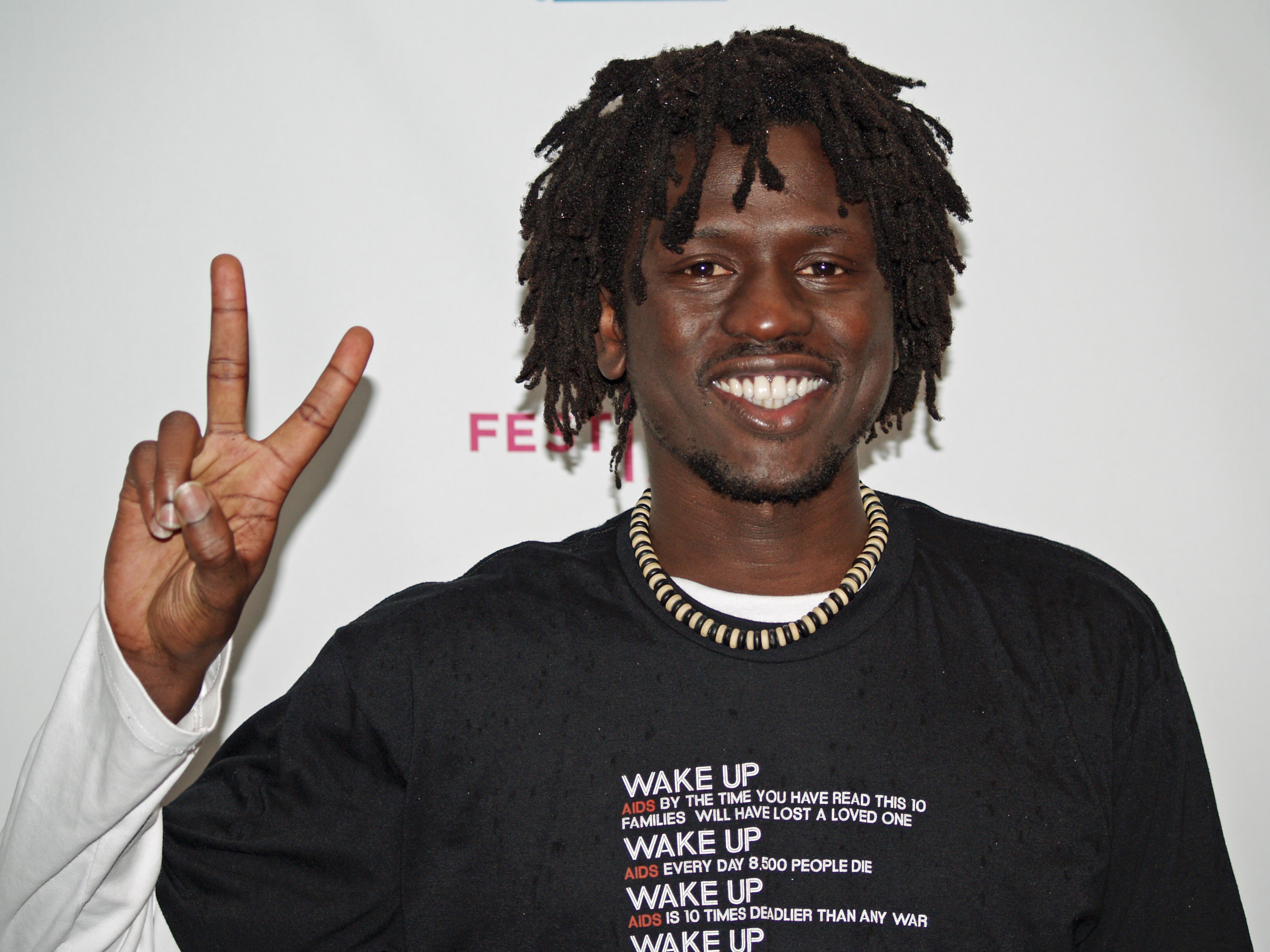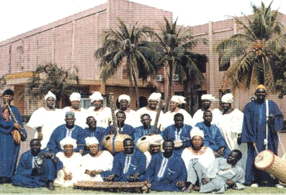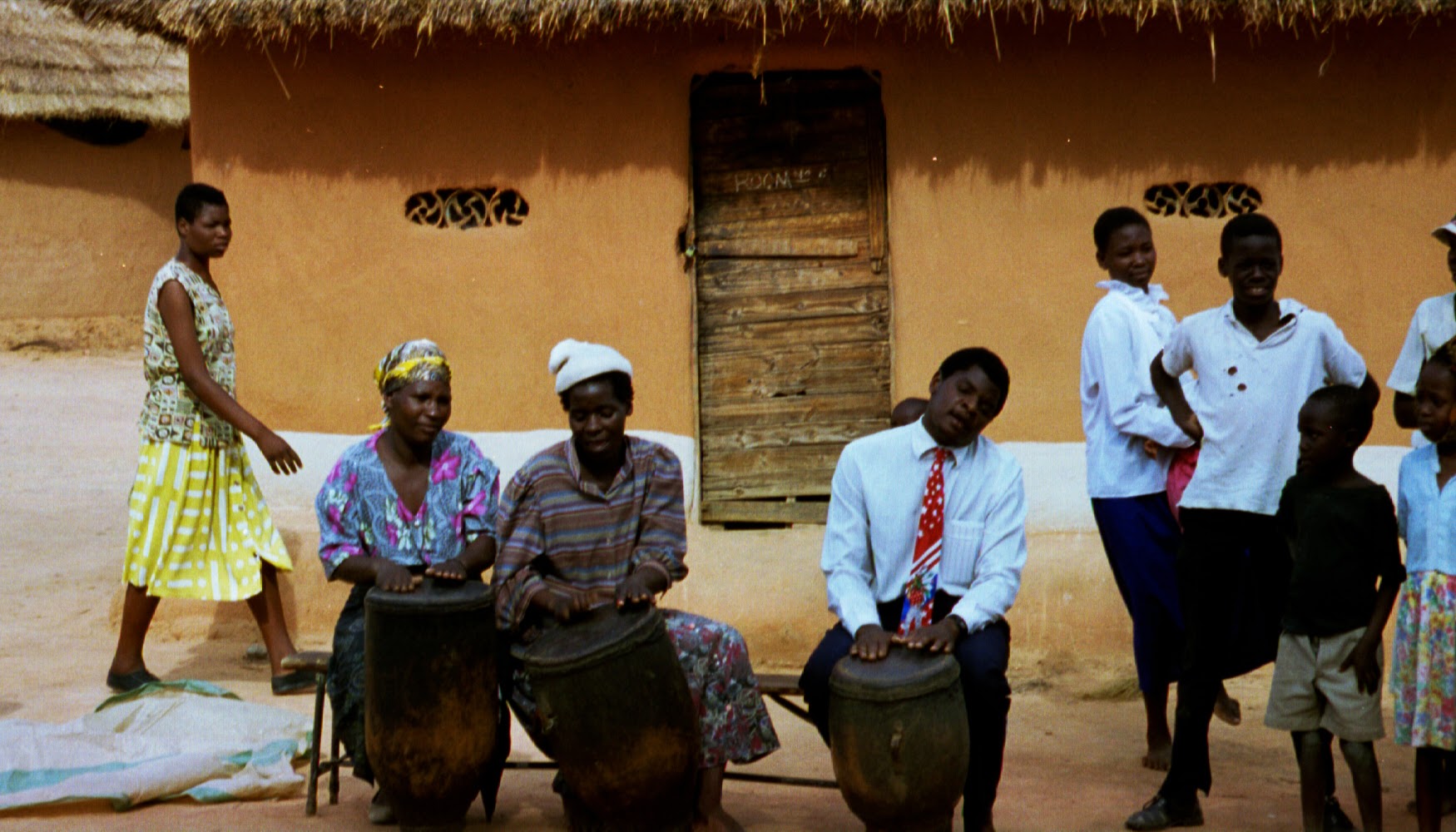|
The Rough Guide To Acoustic Africa
''The Rough Guide To Acoustic Africa'' is a world music compilation album originally released in 2013 featuring acoustic music spanning Sub-Saharan Africa. Part of the World Music Network Rough Guides series, the album contains two discs: an overview of the genre on Disc One, and a "bonus" Disc Two highlighting griot Noumoucounda Cissoko. Disc One features artists hailing from Niger, Madagascar, the DRC, South Africa, Lesotho, Mozambique, Zimbabwe, Ghana, Cameroon, Mali, South Sudan, Sudan, Senegal, and Guinea. All but three tracks are guitar-based. The extensive liner notes were written by Daniel Rosenberg, and Phil Stanton, co-founder of the World Music Network, produced the album. Critical reception The recording received positive reviews. After admitting that compilations spanning many countries typically annoy him, Robert Christgau recounted this one as "soft-spoken" and "pretty" enough to award it an "A−". David Maine of PopMatters wrote that this release was consisten ... [...More Info...] [...Related Items...] OR: [Wikipedia] [Google] [Baidu] |
Music Of The Democratic Republic Of The Congo
Congolese music is one of the most influential music forms of the African continent since the 1930s. Congolese musicians had a huge impact on the African musical scene and outside. Many contemporary genres of music were created or heavily influenced by Congolese music. As the genre of music in Kenya Benga or in Colombia Champeta. Democratic Republic of Congo and (Republic of Congo) are contemporary hubs of African music since the 1930s. Congolese rumba joined in 2021, other living traditions such as Jamaican reggae music and Cuban rumba on Unesco's "intangible cultural heritage of humanity" list. Music of the Democratic Republic of the Congo varies in its different forms. Outside Africa, most music from the Democratic Republic of Congo is called ''Soukous'', which most accurately refers instead to a dance popular in the late 1960s. The term ''rumba'' or ''rock-rumba'' is also used generically to refer to Congolese music, though neither is precise nor accurately descriptive. Peop ... [...More Info...] [...Related Items...] OR: [Wikipedia] [Google] [Baidu] |
MSN Music
''MSN Music'' was a part of MSN's web services. It delivered music news, music videos, spotlights on new music, artist information, and live performances of artists. The website also served as a digital music store from 2004 to 2008. History In 2004, Microsoft created an MSN Music download store to compete with Apple's iTunes Music Store, though its sales in comparison were negligible. The store utilized Microsoft's Windows Media Player application and proprietary Windows Media Format files (protected .wma files). It started out with 1.5 million songs, but decreased to 1.1 million songs due to lagging sales and lack of real support from Microsoft. The MSN Music store was not compatible with Microsoft's own Zune music player. As of 14 November 2006, MSN Music ceased music sales and now redirects viewers to either Zune or Real Rhapsody websites. Microsoft acquired MongoMusic on September 13, 2000 and merged its technology. In 2006, when announcing the closing of MSN Music in ... [...More Info...] [...Related Items...] OR: [Wikipedia] [Google] [Baidu] |
Allmusic
AllMusic (previously known as All Music Guide and AMG) is an American online music database. It catalogs more than three million album entries and 30 million tracks, as well as information on musicians and bands. Initiated in 1991, the database was first made available on the Internet in 1994. AllMusic is owned by RhythmOne. History AllMusic was launched as ''All Music Guide'' by Michael Erlewine, a "compulsive archivist, noted astrologer, Buddhist scholar and musician". He became interested in using computers for his astrological work in the mid-1970s and founded a software company, Matrix, in 1977. In the early 1990s, as CDs replaced LPs as the dominant format for recorded music, Erlewine purchased what he thought was a CD of early recordings by Little Richard. After buying it he discovered it was a "flaccid latter-day rehash". Frustrated with the labeling, he researched using metadata to create a music guide. In 1990, in Big Rapids, Michigan, he founded ''All Music Guide' ... [...More Info...] [...Related Items...] OR: [Wikipedia] [Google] [Baidu] |
Music Of Guinea
Guinea is a West African nation, composed of several ethnic groups. Among its most widely known musicians is Mory Kanté - ''10 Cola Nuts'' saw major mainstream success in both Guinea and Mali while "Yeke Yeke", a single from ''Mory Kanté à Paris'', was a European success in 1988. National music French is the official language of Guinea and is the main language of communication in schools, government administration, the media, and the country's security forces. Independence for Guinea came in 1958. Guinea's President, Sekou Toure, disbanded all private dance orchestras and created a network of state-sponsored groups. The government soon formed the Syli Orchestre National, a dance orchestra that featured some of the best musicians in the land. "" (Liberty) has been the national anthem of Guinea since independence in 1958. It was arranged by Fodéba Keïta, based on the melody "Alfa yaya". Traditional music Demographics of Guinea, Guinea's 10 million people belong to at least t ... [...More Info...] [...Related Items...] OR: [Wikipedia] [Google] [Baidu] |
Music Of Senegal
Senegal's music is best known abroad due to the popularity of mbalax, a development of conservative music from different ethnic groups and ''sabar'' drumming popularized internationally by Youssou N'Dour. Senegalese Musical Instruments List * Bomvola * Ilulam * Tuga Carat * ooga * Gahtim * Kghvawasi * Ghata * Sirom * Xylophone (Around Senegal Brazil China Sudan Ecuador) * Zazoli *bolbia National music During the colonial ages Senegal was colonized by France and many, though not all, Senegalese identified as French instead of any African ethnicity. Post-independence, the philosophy of negritude arose, which espoused the idea that the ''griot'' traditions of Senegal were as valid, classical and meaningful as French classical music. The first President of Senegal, Léopold Sédar Senghor (also a poet) was one of the primary exponents of this. The national anthem of Senegal, ''"Pincez tous vos koras, frappez les balafons"'' ("Pluck all your koras, strike the balafons"), was adopt ... [...More Info...] [...Related Items...] OR: [Wikipedia] [Google] [Baidu] |
Music Of Sudan
The rich and varied music of Sudan has traditional, rural, northeastern African roots and also shows Arabic, Western or other African influences, especially on the popular urban music from the early 20th century onwards. Since the establishment of big cities like Khartoum as melting pots for people of diverse backgrounds, their cultural heritage and tastes have shaped numerous forms of modern popular music. In the globalized world of today, the creation and consumption of music through satellite TV or on the Internet is a driving force for cultural change in Sudan, popular with local audiences as well as with Sudanese living abroad. Even after the secession of South Sudan in 2011, the Sudan of today is very diverse, with five hundred plus ethnic groups spread across the territory of what is the third largest country in Africa. The cultures of its ethnic and social groups have been marked by a complex cultural legacy, going back to the spread of Islam, the regional hist ... [...More Info...] [...Related Items...] OR: [Wikipedia] [Google] [Baidu] |
Music Of South Sudan
The culture of South Sudan encompasses the religions, languages, ethnic groups, foods, and other traditions of peoples of the modern state of South Sudan, as well as of the inhabitants of the historical regions of southern Sudan. Languages The official language of South Sudan is English. Part One, 6(2). "English shall be the official working language in the Republic of South Sudan". There are over 60 indigenous languages, most classified under the Nilo-Saharan Language family. Collectively, they represent two of the first order divisions of Nile Sudanic and Central Sudanic. In the border region between Western Bahr Al Ghazal state and Sudan are an indeterminate number of people from West African countries who settled here on their way back from Mecca—who have assumed a traditionally nomadic life—that reside either seasonally or permanently. They primarily speak Chadian languages and their traditional territories are in the southern portions of the Sudanese regions of Nort ... [...More Info...] [...Related Items...] OR: [Wikipedia] [Google] [Baidu] |
Music Of Mali
The music of Mali is, like that of most African nations, ethnically diverse, but one influence predominates: that of the ancient Mali Empire of the Mandinka (from c. 1230 to c. 1600). Mande people (Bambara, Mandinka, Soninke) make up around 50% of Mali's population; other ethnic groups include the Fula (17%), Gur-speakers 12%, Songhai people (6%), Tuareg and Moors (10%). Salif Keita, a noble-born Malian who became a singer, brought Mande-based Afro-pop to the world, adopting traditional garb and styles. The kora players Sidiki Diabaté and Toumani Diabaté have also achieved some international prominence, as have the late Songhai/Fula guitarist Ali Farka Touré and his successors Afel Bocoum and Vieux Farka Touré, the Tuareg band Tinariwen, the duo Amadou et Mariam and Oumou Sangare. Mory Kanté saw major mainstream success with techno-influenced Mande music. While internationally Malian popular music has been known more for its male artists, there are some exceptions: Fa ... [...More Info...] [...Related Items...] OR: [Wikipedia] [Google] [Baidu] |
Music Of Cameroon
The music of the Cameroon includes diverse traditional and modern musical genres. The best-known contemporary genre is makossa, a popular style that has gained fans across Africa, and its related dance craze bikutsi. The pirogue sailors of Douala are known for a kind of singing called ngoso which has evolved into a kind of modern music accompanied by zanza, balafon, and various percussion instruments. Traditional music The ethnicities of Cameroon include an estimated 250 distinct ethnic groups in five regional-cultural divisions. An estimated 38% of the population are Western highlanders–Semi-Bantu or grassfielders including the Bamileke, Bamum, and many smaller Tikar groups in the northwest. 12% are coastal tropical forest peoples, including the Bassa, Duala, and many smaller groups in the southwest. The southern tropical forest peoples (18%) include the Beti-Pahuin and their sub-groups the Bulu and Fang, the Maka and Njem, as well as, the Baka pygmies. In the semi-a ... [...More Info...] [...Related Items...] OR: [Wikipedia] [Google] [Baidu] |
Music Of Ghana
There are many styles of traditional and modern music of Ghana, due to Ghana's worldwide geographic position on the African continent. The best known modern genre originating in Ghana is Highlife. So many years, Highlife was the preferred music genre until the introduction of Hiplife and many others. Traditional music The traditional musicology of Ghana may be divided geographically between the open and vast savanna country of northern Ghana inhabited by Ghanaians of Gur and Mande speaking groups; and the fertile, forested southern coastal areas, inhabited by Ghanaians speaking Kwa languages such as Akan. *The northern musical traditions belong to the wider Sahelian musical traditions. It features a mix of melodic composition on stringed instruments such as the ''kologo'' lute and the '' gonjey'' fiddle, wind instruments such as flutes and horns, and voice; with polyrhythms clapped or played on the talking drum, gourd drums or ''brekete'' bass drums. The tradition of gyil m ... [...More Info...] [...Related Items...] OR: [Wikipedia] [Google] [Baidu] |
Music Of Zimbabwe
Zimbabwean music is heavily reliant on the use of instruments such as the mbira, Ngoma drums and hosho. Their music symbolizes much more than a simple rhythm, as the folk and pop style styled music was used as a symbol of hope for Zimbabweans looking to gain independence from Rhodesia. Music has played a significant role in the history of Zimbabwe, from a vital role in the traditional Bira ceremony used to call on ancestral spirits, to protest songs during the struggle for independence. The community in Zimbabwe used music to voice their resistance to their oppression, as one of the only weapons they had available to fight back with. In the eighties, the Music of Zimbabwe was at the center of the African Music scene thanks to genres such as Sungura and Jit. However, several performers were banned by state TV and radio leading to the closing of several music venues. Musical Genres Sungura Sungura is the most popular musical genre in Zimbabwe. It emerged in 1953, in a time w ... [...More Info...] [...Related Items...] OR: [Wikipedia] [Google] [Baidu] |

._19th_Century._Jung-Jung_From_The_Kingdom_of_Sine_(in_modern_day_Senegal).jpg)



